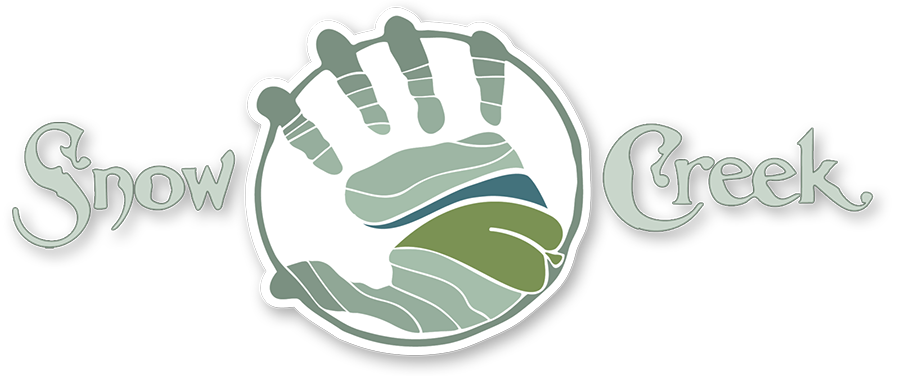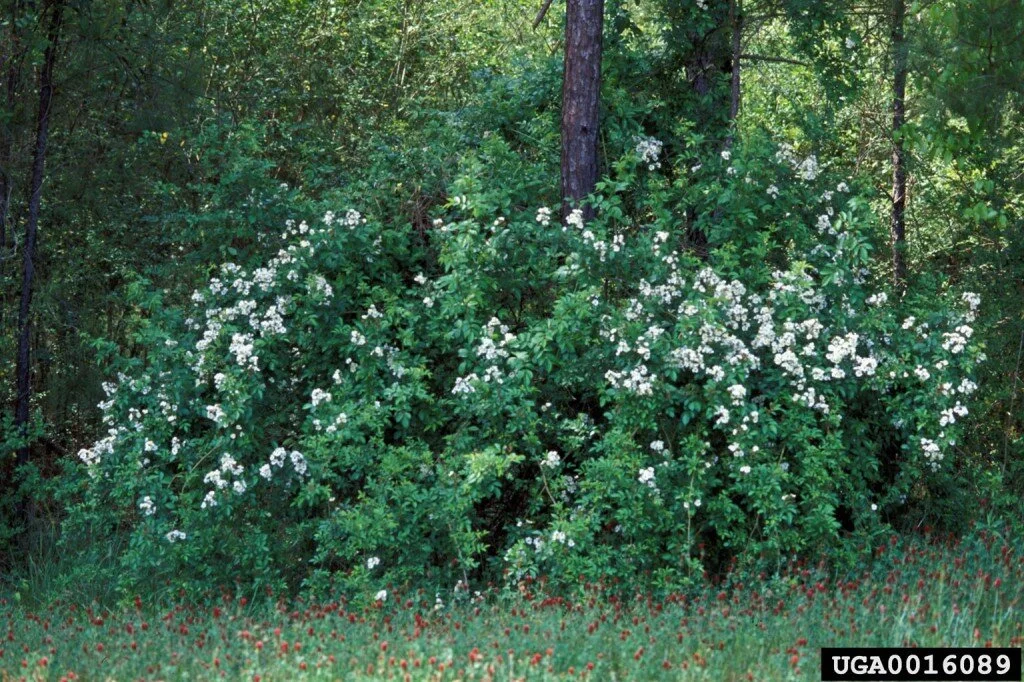Invasive Species of the Day: Multiflora Rose
Multiflora rose (Rosa multiflora) once started in an area, is very difficult to eradicate. In addition to be covered with thorns that can cause painful swelling if you are a poked by them, multifloras produce many seeds which are spread by wildlife.
Plant: Erect climbing, arching, or trailing shrubs to 10 feet (3 m) in height or length. Clump forming. Pinnately compound leaves, frequent recurved and straight thorns, clustered or single white flowers in early summer, and red rose hips in fall to winter.
Stem. Long arching or climbing by clinging using recurved or straight thorns. Green with leaf and branch scars linear and spaced like nodes. Flower buds often red in winter. Bark dark brown with streaks of light brown or green.
Leaves. Alternate, odd-pinnately compound with three to nine elliptic to lanceolate leaflets, each 1 to 3 inches (2.5 to 8 cm) long. Margins finely and sharply serrate. Leafstalk bases clasping, channeled, and often bristled on margins with toothed hairs.
Flowers. April to June. Terminal or axillary branched clusters or single flowers. Five white petals. Many yellow anthers in center.
Fruit and seeds. July to December. Rose hip, spherical, and fleshy, 0.25 to 0.4 inch (0.6 to 1 cm). Green to yellow and ripening to glossy red.
Ecology. Form small-to-large infestations often climbing up into trees. Multiflora widely planted and often spreading along right-of-ways and invading new forests and forest margins. Colonize by prolific sprouting and stems that root, and spread by animal-dispersed seeds.
Resemble native Carolina rose, R. carolina L., swamp rose, R. palustris Marsh., and climbing rose, R. setigera Michx., all of which have pink flowers in spring and nonbristled leafstalk bases, but none forming extensive infestations except swamp rose in wet habitat.
History and use. Introduced from Asia. Traditionally planted as ornamentals, livestock containment, and wildlife habitat. Multiflora widely planted for “living fences” or screening.
Source: http://www.invasive.org/eastern/srs/ER.html
Photo credits: James H. Miller, USDA Forest Service, Bugwood.org and
Nancy Dagley, USDI National Park Service, Bugwood.org


